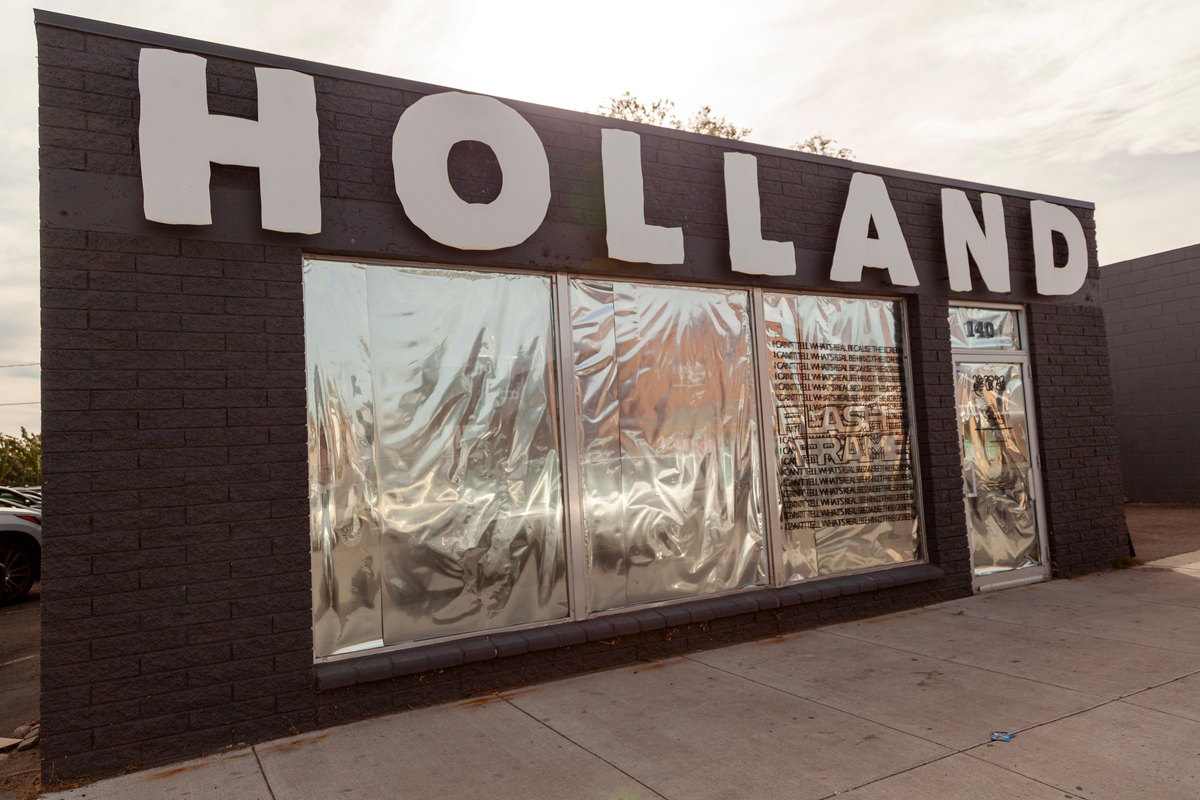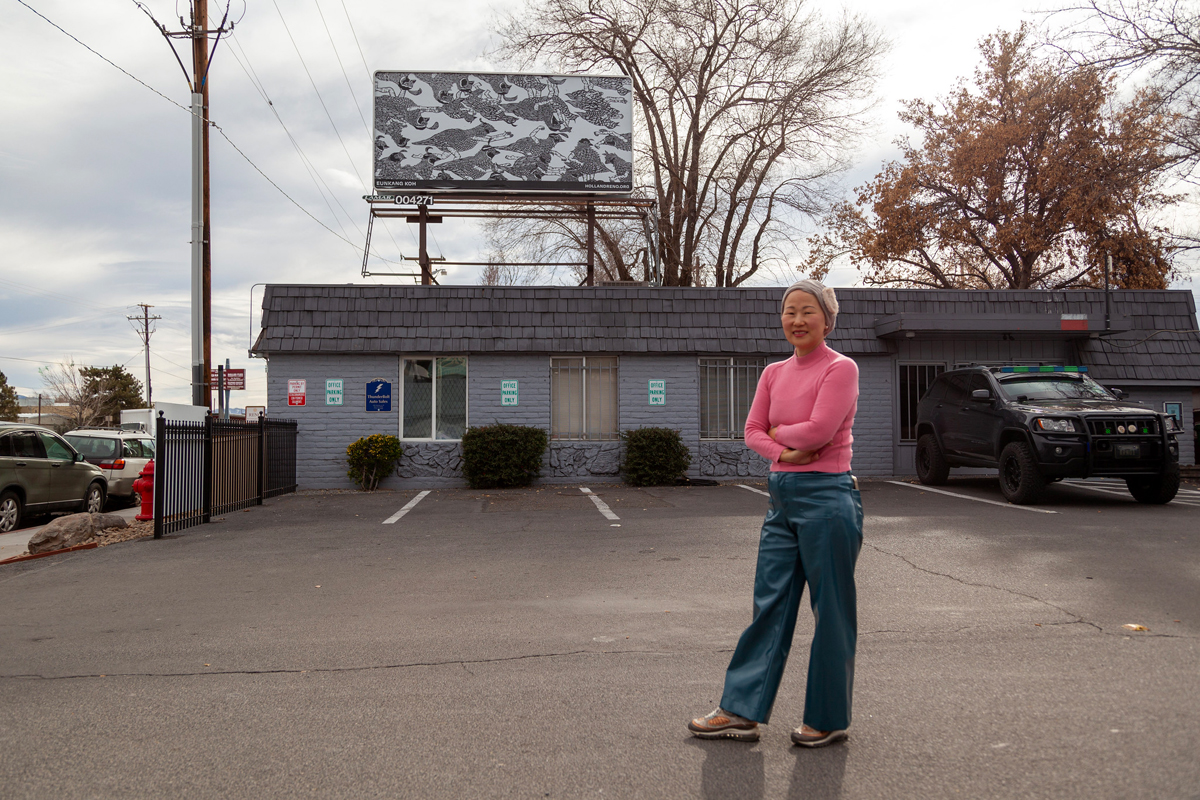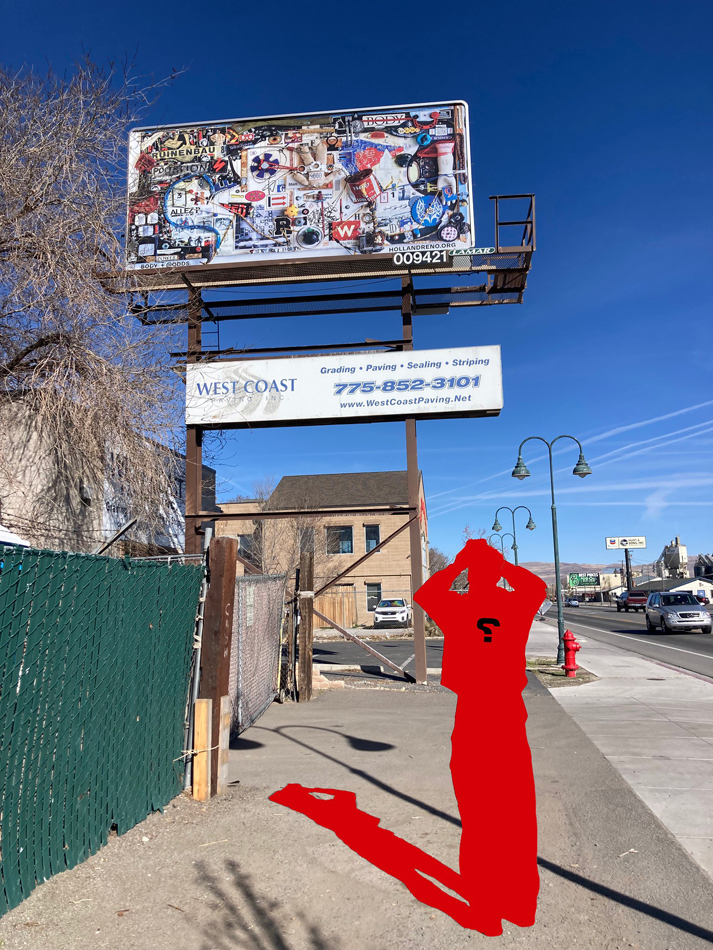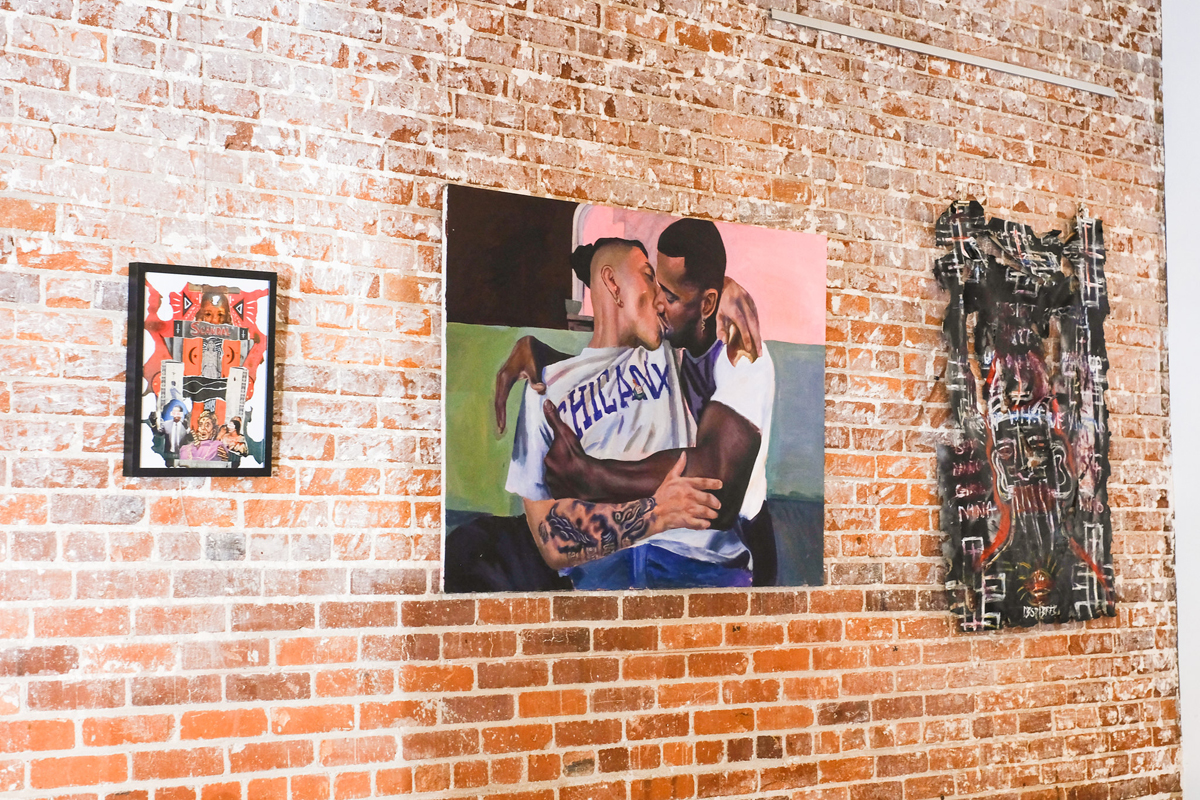The long-running DIY arts organization, which produces 250 programs each year, takes its community-oriented message to the streets.

RENO, NV—Take Interstate 580 north through Reno, Nevada, and you’ll see the usual billboards advertising locals-only casino deals, affordable personal injury lawyers, and budget storage facilities. Drive east on I-80, toward the California border, and you’ll see warnings about drug addiction and hotlines to call for help. You’ll see more ads for casinos.
But interspersed among these are striking billboards that aren’t hawking services or propagating warnings. An image of black-and-white, anthropomorphic birds printed in relief runs across one board; a photograph of a scene assembled from found objects spreads across another; one sign, replicating an image that was painted meticulously by hand, simply says “Thank You.”
The Holland Project, a multidisciplinary arts organization supporting and showcasing artists and musicians in the Reno area, established this Billboard Gallery in 2022 as a pandemic-proof way to connect with the community, and to expand its work beyond the container of four white walls.
“At Holland, we’re all about collaborative efforts that aren’t siloed into different departments. That’s how we structure the entire organization,” Holland Project’s assistant director, Alana Berglund, says. Inspired by a legacy of all-ages, DIY arts organizations—VERA in Holland and The VERA Project in Seattle—Reno’s Holland Project was founded in 2006 by a group of local teens, artists, activists, business owners, and leaders focused on community-building. “That’s what all this is for: fostering the local artist community, these curators, these future cultural leaders,” Berglund says.
The City of Reno established the Art Belongs Here grant initiative in 2019, which was intended to fund temporary and permanent public artworks to nurture and transform community identity. During the Covid-19 pandemic in 2021 “we were still doing programming at the gallery,” Berglund explains, “but there were such strict measures. So we applied to do billboards—something you didn’t have to go inside the gallery to see.”

The billboards have become emblematic of Holland Project’s mission to promote emerging and local artists, and connect them with new audiences. “From the perspective of an artist in town, I can say the billboard gallery is what artists are most excited for,” associate gallery manager David Delfin says. “The foot traffic, the recognition, the eyes on your artwork—the billboard is the most flashy way to do it. Combining younger artists who have never had a show is so impactful.”
The billboards might be the first touchpoint for many people, but they’re just one element of Holland Project’s carefully considered programming. Participating artists are also encouraged to do an interview, write a blog post, or even run a workshop. “It’s not just ‘billboard and done,’” Berglund says. “There’s another record, a discussion. It’s about starting conversations.”
Pandemic or no, Holland Project continually reassesses and reconfigures its operating model. “As a community- and artist-run space, you have to ask, what direction are we going?” Berglund says. “We’re asking how the gallery can be relevant to where we are right now. You can’t do the same thing every day. You have to reflect.”
We could do three big curatorial projects per year, but that’s not what the people want. We currently run about 250 events per year. That’s insane for a gallery.
One of Holland Project’s latest innovations is its Curator Series. Focused on combining voices and perspectives, the gallery staff invites several people to curate a show and design creative programming to accompany it. Recent guest curatorial projects include Flash Frame, an exploration of digital media curated by Sandy Peña and John L’Étoile, and Hija/e/o/x(s) de Su—, a traveling exhibition of Latinx artists curated by Cesar Piedra and Geovany Uranda. Programming ranged from a quinceañera-themed block party to weekly radio shows and workshops.
“We’ve been leaning in on the interdisciplinary art,” Berglund says, “and as brick-and-mortar spaces are becoming less relevant, we’re thinking about how to make the dialogues and [the] curator[s] and the artists more accessible—even if you’re not someone who’s going to walk through a gallery door.” The next co-curated experience will be organized by Tight Knit Group, a cadre of local fiber- and craft-focused artists. The exhibition, Hand Wash Only, will showcase contemporary regional fiber artists and run from May 8 to June 29 alongside weekly meetings (“Fiber Fridays”), textile swaps, workshops, and demos. The show exemplifies Holland Project’s long-term emphasis on craft disciplines.

Holland Project’s focus on accessibility and community service means more change is coming. Now, they’re considering reintroducing the organization’s former committee structure for shows and projects; in this model, proposals are discussed and advanced by a committee of ten to fifteen members of Reno’s art community; each committee member is a volunteer position held for at least one to two years.
The move is a direct reflection of locals’ desire for more programming, more shows. “There are all these amazing artists in Reno again, and they always want to do shows,” Berglund explains. “We could do three big curatorial projects per year, but that’s not what the people want.” In any case, volume is in the Holland Project’s DNA. “We currently run about 250 events per year,” Berglund says. “That’s insane for a gallery.”
Not that the word “gallery” does the breadth of Holland Project’s work any justice. It’s one gallery, two satellites, and dozens of billboards. It’s a vibrant community hub and a committed cultural generator. “The biggest myth of the Holland Project is that it’s for babies. It’s one of the most rigorous gallery programs that we’re aware of, for DIY spaces,” Berglund says.
“I hear a lot of ‘I’m too old.’’ It’s not true—it’s intergenerational. It’s an excellent opportunity for young people to show with their peers, and it caters to the tastes and interests of young people, but you can never be too old. It’s a very contemporary space.”
The Billboard Gallery encapsulates Holland Project’s definition of “contemporary”: a rare place in Reno for artists to play with form and experiment with new modalities.








